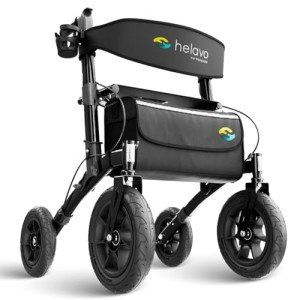The Importance of Safe Walkers: Ensuring Safety and Independence for All
As our population ages, the requirement for mobility assistance becomes significantly apparent. Safe walkers, often referred to as walking help or rollators, play an important function in boosting the safety and independence of people, especially the elderly and those with specials needs. This article goes over the significance of safe walkers, their types, features to consider, and responses often asked questions about their usage.
Comprehending Safe Walkers
A safe walker is a mobility device designed to assist people maintain balance, stability, and confidence while walking. mymobilityscooters.uk provides support when traversing different terrains, providing a much safer alternative to relying solely on canes or crutches.
Kinds Of Safe Walkers
Safe walkers come in various forms, each tailored to fulfill different needs. Here's a table summarizing the primary kinds of walkers available in the market:
| Type of Walker | Description | Ideal For |
|---|---|---|
| Requirement Walker | Lightweight, standard structure, no wheels. | Users requiring stability on flat surfaces. |
| Two-Wheeled Walker | Features two front wheels; back legs are rubber. | Individuals needing some mobility while still needing support. |
| Four-Wheeled Walker (Rollator) | Equipped with 2 or four wheels, brakes, and a seat. | Users trying to find mobility and the option to rest. |
| Walkers with Seat | Comparable to rollators but mostly meant for stability. | Those who may require frequent rest stops. |
| Knee Walkers | Created for individuals with leg injuries, permitting mobility while seated. | Suitable for post-surgery recovery. |
Secret Features of Safe Walkers
When picking a safe walker, a number of features ought to be thought about to make sure both safety and convenience. Below is a list of important features to look for:
- Weight Capacity: Choose a walker that accommodates the user's weight to make sure stability and safety.
- Height Adjustment: Ideal walkers ought to have adjustable heights to offer a comfortable grip for the user.
- Wheels: Opt for walkers with suitable wheel sizes according to surface; bigger wheels offer better mobility on irregular surfaces.
- Brakes: A great walker must have easy to use brakes to ensure safety during usage.
- Foldability: A foldable design enables for easy transport and storage.
- Storage Options: Many walkers featured baskets or trays for carrying individual items, enhancing benefit.
- Comfortable Grips: Ergonomic manages can prevent pain and enhance control throughout usage.
- Seat: If the walker consists of a seat, it must be sturdy and comfortable for resting when needed.
Advantages of Using a Safe Walker
Safe walkers offer numerous advantages that extend beyond mere mobility. Here are some benefits:
- Enhanced Stability: Walkers offer sturdy support, minimizing the threat of falls, which are common amongst seniors.
- Enhanced Confidence: Using a walker can empower people to engage more actively in everyday activities, promoting self-reliance.
- Exercise: Safe walkers encourage users to remain active, helping maintain strength, flexibility, and coordination.
- Social Inclusion: With increased mobility, individuals can participate more quickly in celebrations and recreational activities.
- Customization: Many walkers allow for customized adjustments to fulfill particular health needs.
Frequently Asked Questions (FAQs)
1. How do I know if a walker is best for me or my loved one?
Identifying the appropriate walker depends on an individual's mobility requirements, balance, and total health. Consulting a healthcare professional can provide personalized suggestions.
2. Is it essential to utilize a walker indoors in addition to outdoors?
Yes, a walker can be helpful both indoors and outdoors. It can enhance stability on slippery floors or unequal outdoor courses, making it a versatile mobility aid.
3. Can I take my walker on public transport?
Most walkers are designed to be lightweight and foldable, making them appropriate for public transport. Consult particular transport services for their policies.
4. What is the average cost of a safe walker?
Prices can vary based on the type and features. Requirement walkers can cost as low as ₤ 50, while more advanced rollators can exceed ₤ 200.
5. How do I keep my walker?
Regular upkeep consists of looking for loose screws, making sure wheels are practical, and cleaning it to get rid of dirt or debris. Regular checks will prolong the life of the gadget.
The significance of safe walkers can not be downplayed. These mobility gadgets are essential for maintaining an independent way of life, improving safety, and instilling confidence in users. With numerous choices readily available, finding the ideal walker customized to private needs can significantly enhance the quality of life. Whether it's for individual usage or care for a loved one, investing time in selecting the suitable walker is a crucial action toward making sure safety and promoting an active lifestyle.

